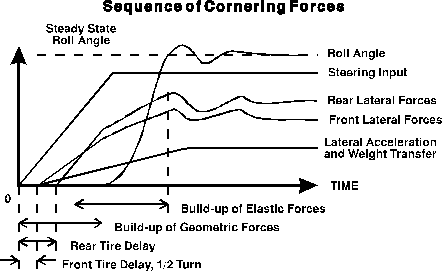I m not trying to sell anything.
I find a way to design a twin arm with Rc not moving, which many author claim it is a good thing. honestly I have no clue if it is good not or not, so my initial question on this thread.
I never give an attention to FBRC concept, because as far as you deal with force the law in static sum of force = masse x acceleration, and then you calculate every force on every compenent and you are able to conclud something or not. FBRC only deals with lateral.
In my point of wiew, for a steady state corner, a suspension is a mechanical system wich mass is summit to vertical and lateral acceleration, on this mecahnical system, only spring are deformable, once you have calculate every force on each component, and end up with the force on the spring and thus their deflection, you could have an acceptable wiew of what happen in roll.
For having done this, the suspension does not roll around roll center definitely as long as you get jacking effect, and as long as the track alter between static and roll.
What I dislike in the Mitchell paper, it start from static to a roll position, then include force, then include FAP. the question is how his value of roll is done (I imagine symetric, which is rarely the case due to jacking effect).
You wrote 'Bear in mind that the FAP is most relevant for the side that is more heavily loaded (the outside wheel) because of the way the FBRCH is calculated', I was thinking it was important for you, so I notice RC-COG constant means FBRC-Cg constant.
If you mention the nowadays F1 suspension, you have to keep in mind, that wishbone are place this way only for aero reason, It is not me who say that, it is written in Adrian Newey book.
'I'm trying to explain why you won't have any success with that.', I will be pleased to know.

